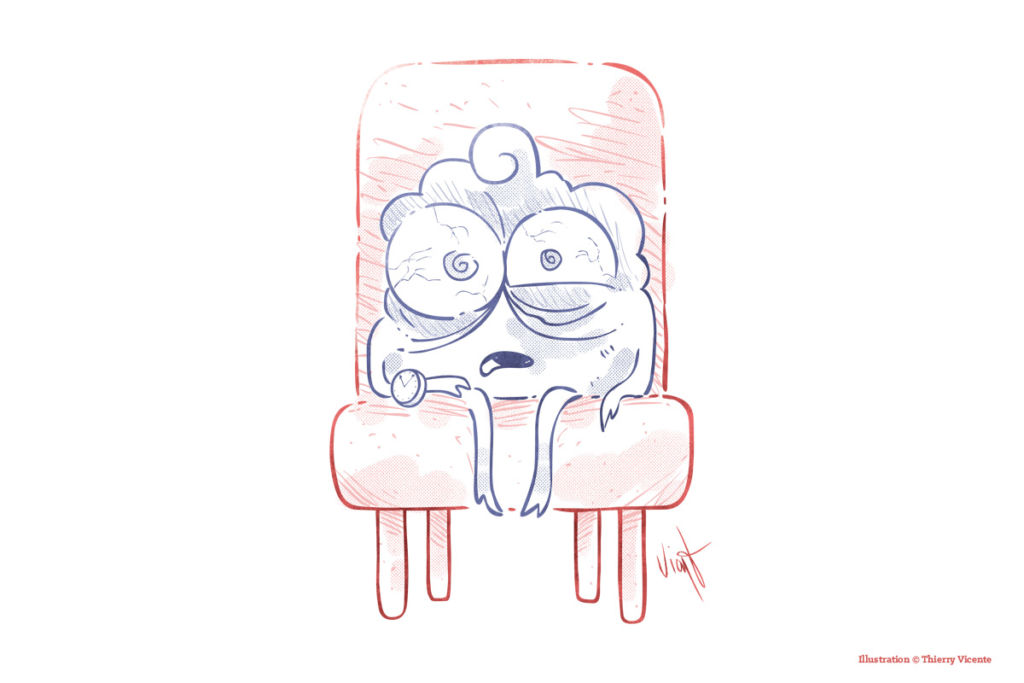[LUM#11] A new treatment for narcolepsy
When the inability to resist sleep becomes a nightmare! This is the daily reality for nearly 20,000 people in France who suffer from narcolepsy. To better treat this condition, Yves Dauvilliers, a neurologist specializing in sleep disorders, and his team at Montpellier University Hospital have developed an innovative treatment.

The most severe form of sleepiness in humans, narcolepsy usually develops in people aged 15 to 20. While difficulty staying awake is the main symptom of this neurological disorder, it is not the only one. Sleepiness can sometimes be accompanied by weight gain, hallucinations, sleep paralysis, and frequently cataplexy, or "loss of muscle strength linked to positive emotions such as laughter, " explains Yves Dauvilliers of the Neuropsychiatry: Epidemiological and Clinical Research Laboratory, and coordinator of the four narcolepsy reference centers recognized by the Ministry of Health, led by the Montpellier University Hospital.
80,000 neurons destroyed
Narcolepsy, an autoimmune disease with genetic and environmental causes, and its mechanisms have only been well understood by researchers for the past 20 years. "The human brain contains more than 100 billion neurons," explains Yves Dauvilliers. "Narcolepsy destroys 80,000 of them by targeting exclusively hypocretin neurons."
Hypocretin is a neurotransmitter whose main role is to stimulate wakefulness. "It is because hypocretin neurons are activated that you can engage in wakeful behaviors, such as eating, talking, and walking," the researcher points out. Fortunately for narcoleptics, hypocretin is not the only neurotransmitter that plays this role, otherwise they would be asleep 24 hours a day."
Other neurotransmitters such as dopamine, norepinephrine, histamine, and acetylcholine can partially take over when hypocretin neurons disappear. The goal of narcolepsy treatments is therefore to increase the presence of these molecules in the synaptic cleft connecting two neurons in order to stimulate the wakefulness message. "Neurons release their neurotransmitters into the presynaptic button but then recapture some of them to prevent new protein synthesis," explains Yves Dauvilliers. "Medications prevent the recapture of these neurotransmitters to increase their number and thus promote wakefulness."
Mitigate the risk of side effects
Amphetamines, which prevent the reuptake of dopamine, were initially used as the primary treatment for narcolepsy. However, due to significant side effects, they were gradually replaced by Ritalin, which is also prescribed for hyperactivity, and today by Modiodal or Wakix, which increases histamine levels.
While these treatments are effective, their effects are not always sufficient or long-lasting. "Sometimes there is a kind of rebound effect," explains the researcher. " Over time, people become a little drowsy again. Unfortunately, if you increase the dose too much, you risk side effects such as headaches, irritability, high blood pressure, etc." " Hence the need for a new treatment.
It's now a reality. After four years of work and testing at the Montpellier reference center, the new drug, developed with JAZZ Pharmaceuticals, obtained US marketing authorization last March and should receive European approval by the end of the year. This innovative treatment no longer acts solely on dopamine reuptake but also on norepinephrine, and has proven to be "highly effective, well tolerated, and without loss of efficacy over time, at least during the one-year evaluation period, " says Yves Dauvilliers.
Double resistance to sleep
For three months, the 250 patients in the cohort were ableto self-assess using the Epworth scale. This questionnaire covers eight everyday situations in which patients are likely to fall asleep: reading, watching TV, driving, etc. Their resistance to sleep was also tested in the laboratory. Seated in a room with no stimulation and bathed in dim light, the goal was to stay awake for 40 minutes without falling asleep. This was repeated four times at two-hour intervals. "Under such conditions, narcoleptics usually fall asleep after 10 or 12 minutes. Previous treatments increased their resistance by 3 or 4 minutes, but with this one, it has doubled," reports Yves Dauvilliers. This is enough to earn Montpellier its nickname as "the city where the sun never sets," even for narcoleptics.
A difficult diagnosis
At the forefront of research, the Montpellier Narcolepsy Reference Center is also fighting for better diagnosis of the disease. "Only a third of narcoleptics receive treatment. The diagnosis takes 8 to 10 years," reveals Yves Dauvilliers, a sleep specialist at the university hospital. "People think that sleep deprivation is the only factor that causes drowsiness, but at 15 or 20 years of age, it's not normal to be sleepy in class if you've had enough sleep at night." Hence the importance, at an age when professional futures are often being decided, of ensuring that this drowsiness is not masking an underlying disease.
Find UM podcasts now available on your favorite platform (Spotify, Deezer, Apple Podcasts, Amazon Music, etc.).